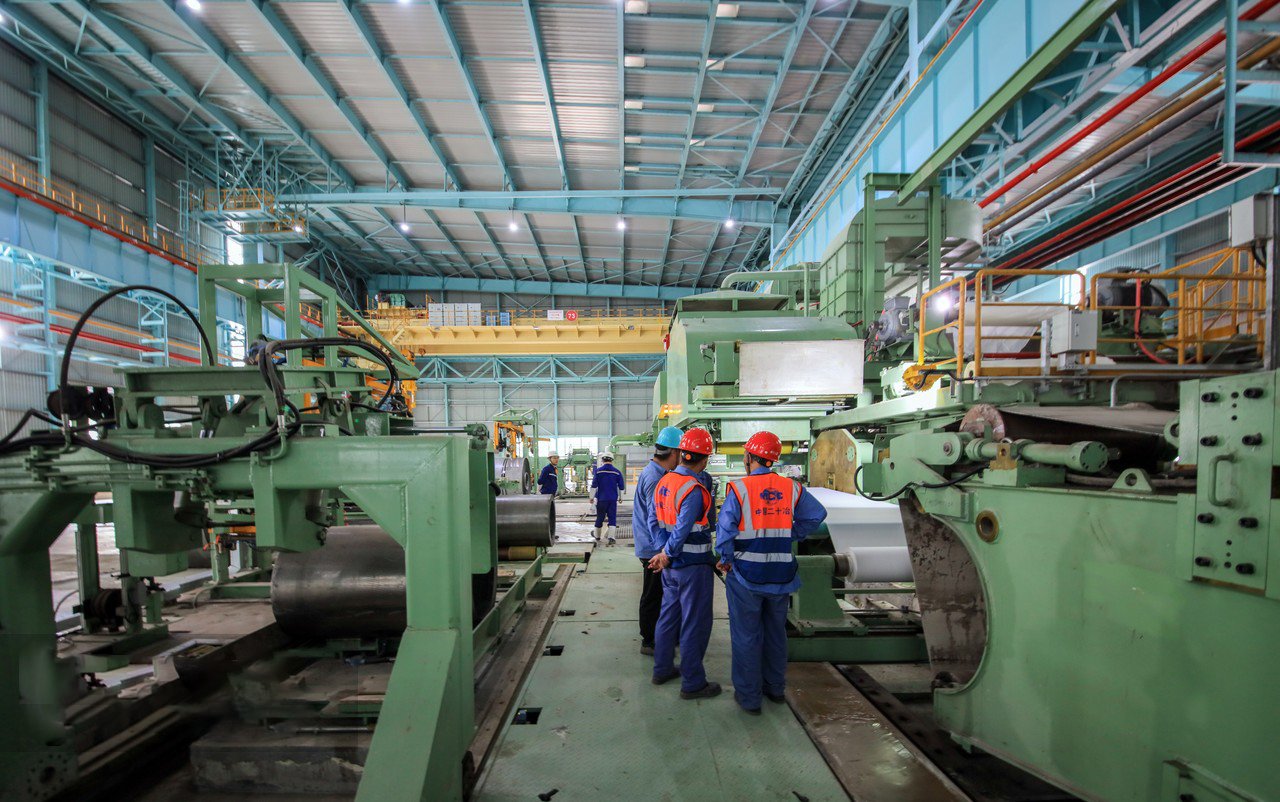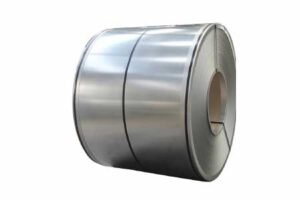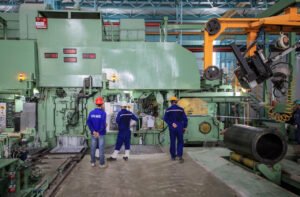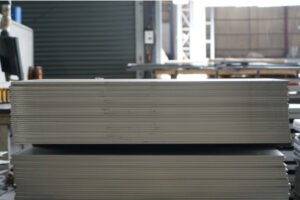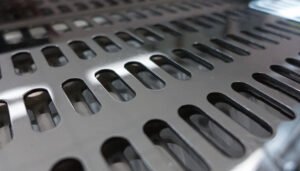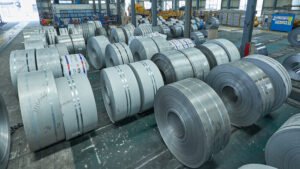Heat-Resistant Stainless Steel Sheet for Industrial Furnaces and Ovens

Are your industrial furnace operations plagued by frequent material failures and costly downtime? The intense heat can cause standard metals to warp, scale, and degrade, leading to production halts and safety hazards. Choosing the right material is crucial for ensuring reliability and long-term performance.
A heat-resistant stainless steel sheet is specifically engineered for high-temperature applications like industrial furnaces and ovens. Its composition, rich in chromium and often nickel, forms a stable, protective oxide layer that resists scaling, oxidation, and corrosion at elevated temperatures, ensuring structural integrity and longevity.
Navigating the complexities of material science can be daunting, but understanding the fundamental differences between standard steel and heat-resistant alloys1 is the first step toward optimizing your industrial heating processes. This knowledge not only prevents costly failures but also unlocks new levels of efficiency and safety. In my years at MFY, I’ve seen countless companies transform their operations by making this critical switch.
This isn't just about swapping one metal sheet for another; it's a strategic decision that impacts your entire production chain. The initial investment in premium, heat-resistant stainless steel pays dividends through reduced maintenance, lower energy consumption, and enhanced product quality. We will explore the science behind material failure, the specific advantages of alloys designed for heat, and the practical steps you can take to select and maintain the perfect solution for your industrial furnaces, drawing on real-world examples and hard data.
What problems arise when using standard materials in industrial furnaces and ovens?
Struggling with materials that can't handle the heat in your furnaces? Standard steel often leads to warping and scaling, causing structural failures and contaminating your products. This unreliability disrupts production schedules, inflates maintenance budgets, and creates significant operational headaches you simply don't need.
Using standard materials like carbon steel in industrial furnaces leads to rapid degradation through oxidation, warping, and loss of strength. This results in costly downtime for repairs, reduced thermal efficiency, potential product contamination from scaling, and significant safety risks from potential structural collapse.
When a furnace component fails, the consequences ripple far beyond the immediate replacement cost. I recall a client in the automotive parts manufacturing sector who was using standard carbon steel for their heat treatment oven racks. They were replacing them every few months, accepting it as a "cost of doing business." The real problem wasn't just the material cost; it was the unscheduled downtime that threw their just-in-time production schedule into chaos. Every time a rack warped or failed, an entire batch of high-value components was compromised, and the production line stood idle. This seemingly small material oversight was costing them hundreds of thousands in lost productivity and scrap material annually. This is a common story. Many businesses underestimate the hidden costs associated with using inadequate materials, focusing only on the initial procurement price rather than the total cost of ownership. Moving beyond this mindset is crucial for achieving operational excellence and maintaining a competitive edge in a demanding market.
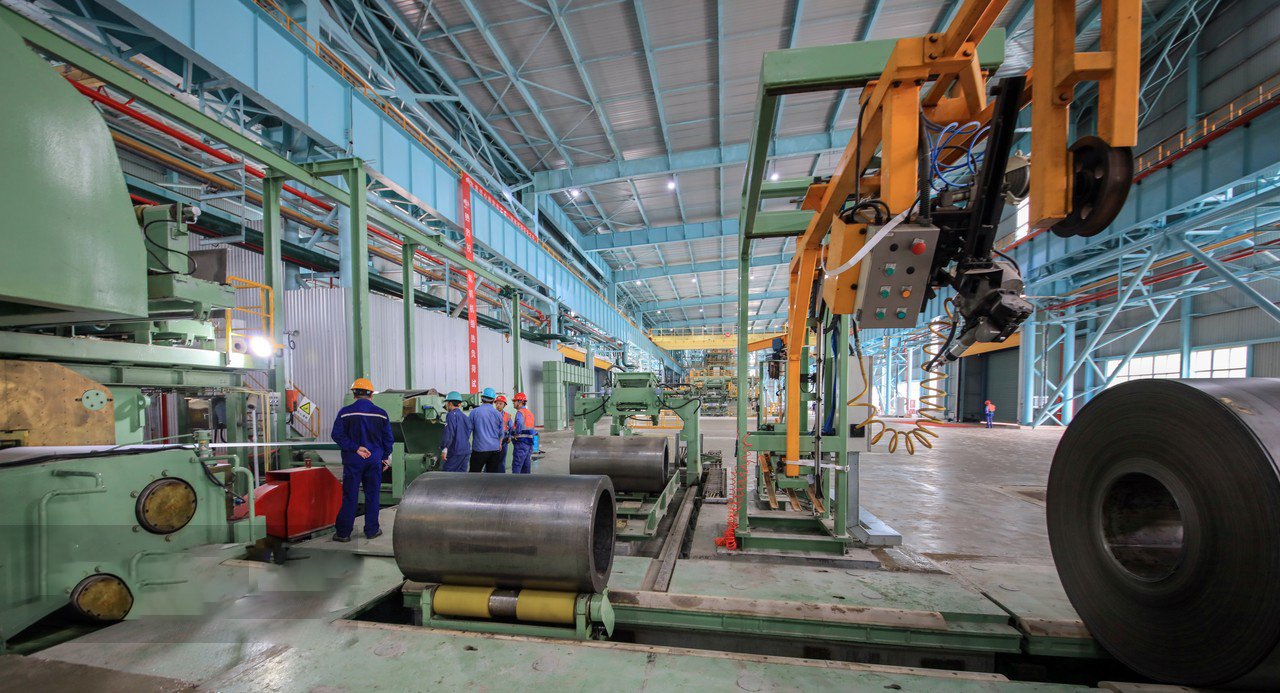
The decision to use standard materials like carbon steel or lower-grade alloys in high-temperature environments is often driven by a short-sighted focus on upfront costs. However, my experience across numerous industries has shown this to be a false economy. The initial savings are quickly erased by a cascade of operational problems that create far greater financial and logistical burdens. These materials, when subjected to the extreme and often cyclical thermal stresses of industrial furnaces and ovens, begin to fail in predictable yet highly disruptive ways. The issues are not merely cosmetic; they strike at the core of your operational efficiency, safety protocols, and product quality. Understanding the specific failure modes is the first step for any engineering or procurement manager looking to build a more resilient and profitable operation. From the microscopic changes that weaken the material to the macroscopic failures that halt production, the problems are interconnected and demand a more robust material solution. At MFY, we don't just supply steel; we partner with clients to diagnose these deep-seated issues and engineer solutions that provide lasting value, ensuring that the heart of their operation—their furnaces and ovens—beats strong and reliably.
The Hidden Costs of Material Warping and Scaling
Material warping is one of the most immediate and visible failures. When a standard steel sheet is heated, it expands, and upon cooling, it contracts. In the non-uniform temperature landscape of a furnace, this thermal cycling is rarely symmetrical. The result is distortion, buckling, and warping. A warped furnace component, whether it's a liner, a conveyor belt, or a support structure, loses its dimensional stability. This can impede the movement of products through the furnace, cause jams, and lead to uneven heating, directly impacting the quality of the final product. A client in the ceramics industry found that warped kiln shelves were causing their delicate products to crack, leading to a rejection rate of nearly 15%.
Scaling, or high-temperature oxidation, is a more insidious problem. At elevated temperatures, the surface of carbon steel reacts with oxygen in the atmosphere to form a brittle layer of iron oxide, or scale. This scale can flake off, a phenomenon known as spalling. These flakes can contaminate the products being processed, a critical issue in industries like food processing, pharmaceuticals, or electronics manufacturing where purity is paramount. Furthermore, as the scale flakes away, it exposes fresh metal to further oxidation, leading to a continuous loss of material. This thinning of the component's cross-section progressively weakens it, reducing its load-bearing capacity and making it susceptible to mechanical failure.
The financial implications are significant. The direct costs include frequent replacement of failed components and the labor required for installation. However, the indirect costs are often far greater. Unscheduled downtime disrupts production flow, leading to missed deadlines and potential penalties. According to a report by the Kimberlite Group, unscheduled downtime can cost some industrial manufacturers over $100,000 per hour. When a furnace is down, the entire production line it serves may be forced to stop, magnifying the financial impact exponentially.
Compromised Safety and Product Quality
Beyond the financial costs, the failure of standard materials in high-temperature applications poses serious safety risks. A furnace is a high-energy environment, and the structural integrity of its components is critical to safe operation. A support structure or hanger that has been weakened by continuous oxidation and thermal cycling can fail catastrophically, dropping its load and potentially damaging other parts of the furnace, such as heating elements or insulation. In the worst-case scenario, a structural failure could lead to a breach of the furnace shell, endangering personnel and surrounding equipment. The risk of such an event makes the use of underspecified materials an unacceptable gamble.
Product quality is another direct casualty. As mentioned, flaking scale is a major source of contamination. For an engineering contractor building industrial bakery ovens, using standard steel for conveyor belts would be disastrous. The scale could easily mix with the food products, leading to batch rejection, brand damage, and potential health code violations. The problem isn't limited to direct contamination. Warped or degraded internal components lead to inconsistent heat distribution within the furnace. This lack of temperature uniformity results in products that are not heat-treated, fired, or cured to specification, leading to high rejection rates and inconsistent performance of the final product.
In my discussions with equipment integrators, the reliability of the components they build into their systems is paramount to their reputation. Choosing a material that is not fit for purpose is a direct threat to that reputation. A single, well-publicized failure can undo years of building trust with their client base. Therefore, the selection of materials like heat-resistant stainless steel is not just an engineering choice but a critical business decision that safeguards quality, ensures safety, and protects brand integrity.
Inefficiency and Increased Energy Consumption
A furnace's efficiency is largely dependent on its ability to contain and transfer heat effectively. Standard materials degrade this efficiency over time. The formation of a thick, insulating layer of oxide scale on furnace components, including the inner walls and heating element sheaths, acts as a barrier to heat transfer. The furnace's control system, sensing a lower-than-setpoint temperature, will force the heating elements to work harder and longer to compensate. This results in a significant increase in energy consumption to achieve the same processing temperature.
The impact on the bottom line can be substantial. For large-scale manufacturing companies, energy is a major operational expense. A study by the U.S. Department of Energy highlighted that improving the efficiency of industrial heating systems can yield energy savings of up to 20%. When furnace materials degrade, efficiency plummets. A furnace that once operated at peak efficiency slowly becomes an energy drain, quietly eroding profit margins. This inefficiency is often a hidden cost, creeping up over time and only becoming apparent through a detailed energy audit or a sharp rise in utility bills.
Furthermore, the degradation of internal components can disrupt the carefully designed airflow and radiation patterns within the furnace. This disruption leads to hot and cold spots, exacerbating the problem of non-uniform heating and further compromising product quality. The furnace is no longer the controlled, precise environment it was designed to be. Addressing these issues requires a material that not only withstands the heat but also maintains its surface integrity and thermal conductivity over thousands of operational hours. This is precisely the value proposition of specialized heat-resistant stainless steel, turning a major operational liability into a source of long-term efficiency and reliability.
Heat-resistant steel prevents scalingTrue
The chromium-rich oxide layer formed on heat-resistant stainless steel sheets actively prevents oxidation and scaling at high temperatures.
Standard steel improves furnace efficiencyFalse
Standard steel forms insulating oxide layers that reduce heat transfer, forcing furnaces to consume more energy to maintain temperatures.
Why do traditional materials fail under high-temperature conditions?
Ever wondered why that carbon steel component failed so spectacularly in your furnace? It wasn't just the heat; it was a microscopic battle the material was destined to lose. The combination of high temperatures and atmospheric gases initiates destructive chemical and physical changes that traditional materials simply cannot resist.
Traditional materials like carbon steel fail at high temperatures because they lack the necessary alloying elements. This leads to rapid oxidation (scaling), loss of tensile strength, and susceptibility to permanent deformation under load (creep), causing warping, cracking, and eventual structural failure.
The failure of a material in a high-temperature environment is a fascinating, albeit costly, lesson in metallurgy. From MFY's perspective as a supplier, we see the consequences firsthand when new clients approach us after a catastrophic failure. They often bring a component—a twisted, brittle piece of what was once a robust carbon steel rack or liner—and ask, "What went wrong?" The answer lies in the material's fundamental chemistry and its response to thermal energy2. The heat acts as a catalyst for destructive processes that are negligible at room temperature but become aggressive and rapid as the temperature climbs. It's a combination of chemical attack from the furnace atmosphere and a physical weakening of the material's internal structure. This is not a simple case of the metal "melting"; the failure occurs at temperatures well below the melting point. It’s a gradual, yet certain, degradation that turns a reliable component into a liability. Understanding these failure mechanisms is essential for anyone responsible for specifying materials for industrial furnaces and ovens.

When we delve into the science of material failure, we move beyond simple observation and into the realm of solid-state chemistry and physics. A traditional steel component doesn't just get hot and then fail; it undergoes a profound transformation. At MFY, our technical team often explains this to clients by using the analogy of a microscopic civil war. The atoms within the steel's crystal lattice, which are stable and orderly at ambient temperatures, become agitated and mobile when heated. This increased energy allows them to react with elements in the furnace atmosphere, such as oxygen, carbon, and sulfur, in a process of chemical degradation. Simultaneously, the bonds holding the atoms together weaken, making the material susceptible to physical stresses that it would easily resist when cold. This dual assault—chemical and physical—is what leads to the catastrophic failures we see. An engineering contractor building a furnace for a client in the Middle East, for example, must consider not only the extreme operating temperatures but also the specific atmospheric composition, as even trace elements can accelerate these failure mechanisms. It is this deep, multi-faceted understanding of material science that allows for the selection of an appropriate heat-resistant alloy that can win this microscopic war.
Understanding Oxidation and Carburization at a Microscopic Level
Oxidation is the most common failure mode for traditional steels at high temperatures. At its core, it's a chemical reaction between the iron in the steel and the oxygen in the furnace atmosphere. While a thin, stable oxide layer can be protective, the oxide that forms on carbon steel is anything but. It is a porous, multi-layered scale that continuously grows and flakes off, exposing fresh metal to attack. This process, governed by parabolic rate laws, accelerates exponentially as the temperature increases. For instance, the oxidation rate for carbon steel can double with every 20-25°C increase in temperature. This relentless consumption of the base metal leads to a reduction in the component's cross-sectional area, directly diminishing its mechanical strength.
Carburization is another insidious chemical attack, particularly prevalent in carbon-rich furnace atmospheres used for processes like carburizing heat treatments. Carbon from the atmosphere diffuses into the steel, reacting with iron and other elements to form hard, brittle carbides. While this process is intentional on the surface of parts being heat-treated, it is disastrous when it occurs within the furnace components themselves. The formation of these internal carbides leads to a significant loss of ductility and toughness. The once-strong steel component becomes as brittle as glass at room temperature, making it extremely vulnerable to fracture from mechanical shock or thermal cycling.
A similar process, nitriding, can occur in ammonia-rich atmospheres, and sulfidation is a major concern in environments containing sulfur compounds, often from the combustion of fossil fuels. Each of these mechanisms attacks the steel at a fundamental level, altering its chemistry and crystalline structure until it can no longer perform its intended function. This is why a simple material like carbon steel is wholly inadequate for long-term service in a chemically active, high-temperature environment.
Thermal Fatigue and Creep: The Silent Killers of Structural Integrity
While chemical attacks degrade the material's composition, physical forces work to tear it apart. Thermal fatigue is a primary culprit. Industrial furnaces are rarely held at a constant temperature; they are heated up for a production run and cooled down afterward. This thermal cycling induces repeated expansion and contraction. Because different parts of a component heat and cool at different rates, internal stresses are generated. Over many cycles, these stresses initiate microscopic cracks, which then propagate with each subsequent cycle until the component fails. This is the same principle that causes a paperclip to break after being bent back and forth multiple times. In a furnace component, the "bending" is done by thermal expansion, and the result is a fracture that can appear sudden and unexpected.
Creep is a more subtle, time-dependent phenomenon. It is defined as the permanent, plastic deformation of a material under a constant load at elevated temperatures. Even a stress that is well below the material's yield strength at room temperature can cause it to slowly and permanently stretch, or "creep," when it's hot. Imagine a steel hanger holding a load inside a furnace. Over hundreds of hours, even if the load is not excessive, the hanger will gradually elongate until it eventually fails. The rate of creep is highly sensitive to both temperature and stress. A study published in the Journal of Materials Engineering and Performance showed that for a typical chromium-molybdenum steel, increasing the temperature from 540°C to 565°C can reduce the time to rupture by a factor of three.
These two mechanisms, thermal fatigue and creep, often work in concert. The cyclic stresses from thermal fatigue can accelerate creep damage, and the microscopic voids and cracks formed by creep can become initiation sites for fatigue cracks. Together, they are a potent combination that undermines the structural reliability of any material not specifically designed to resist them.
Case Study: A Manufacturing Partner's Struggle with Carbon Steel
I vividly remember working with an automotive components manufacturer in India a few years ago. They operated a large continuous furnace for annealing forged parts, and they were experiencing chronic failures of their conveyor belt and support rollers, which were made from standard carbon steel. Their maintenance logs showed that they were replacing major sections of the conveyor every four to six months, a cycle of costly repairs and frustrating downtime they had come to accept. The furnace operated at around 900°C, and the failures were a classic combination of severe oxidation, warping from thermal cycling, and creep-induced stretching of the belt links.
We initiated a joint analysis. Our team took samples of the failed components back to our lab, while their engineers provided detailed operational data: temperature profiles, atmospheric conditions, and load calculations. The evidence was clear. The carbon steel was oxidizing rapidly, creating a thick, flaky scale that contaminated the annealed parts and acted as an abrasive, accelerating wear on the rollers. The belt was sagging and stretching due to creep, causing tracking problems and eventually leading to catastrophic tears. The financial toll was staggering when they calculated the lost production, the cost of replacement parts, and the labor hours.
We recommended a transition to a heat-resistant stainless steel sheet, specifically Grade 310S3, for fabricating a new conveyor system. The high chromium (25%) and nickel (20%) content of 310S provides excellent resistance to oxidation and carburization, while its austenitic structure gives it superior high-temperature strength and creep resistance. The initial investment was significantly higher than for carbon steel, which caused some hesitation. However, our comparative analysis projected a service life of at least 3-4 years, not months.
| Property | Carbon Steel (A36) | Stainless Steel (310S) |
|---|---|---|
| Max Service Temp. (Oxidizing) | ~500°C (932°F) | ~1150°C (2100°F) |
| Chromium (Cr) Content | < 0.3% | 24-26% |
| Nickel (Ni) Content | 0% | 19-22% |
| High-Temp Strength | Poor (loses strength rapidly) | Excellent (high creep resistance) |
| Oxidation Resistance | Poor (forms loose scale) | Excellent (forms stable, adherent oxide) |
| Relative Initial Cost | 1x | 8-10x |
| Expected Service Life (900°C) | < 6 Months | > 3 Years |
They made the switch. The result? The new 310S stainless steel conveyor has now been in operation for over four years with only minimal, scheduled maintenance. Downtime due to conveyor failure has been completely eliminated. The client later told me that the ROI was realized in less than 18 months, and the project fundamentally changed their approach to material specification throughout their plant.
Oxidation accelerates with temperatureTrue
Oxidation rates for carbon steel can double with every 20-25°C temperature increase, as mentioned in the parabolic rate laws section.
Carbon steel resists creep deformationFalse
The case study clearly shows carbon steel conveyor belts sagging and stretching due to creep at high temperatures, unlike heat-resistant alloys.
How does heat-resistant stainless steel address these high-temperature challenges?
Tired of materials that surrender to the heat? Imagine a steel that forms its own protective shield, maintaining its strength when temperatures soar. Heat-resistant stainless steel isn't just a material; it's an engineered solution designed to thrive where others fail, ensuring operational stability.
Heat-resistant stainless steel combats high-temperature failure through its high chromium content, which forms a stable, self-repairing chromium oxide layer. This prevents destructive oxidation, while alloying elements like nickel and silicon enhance high-temperature strength (creep resistance) and structural integrity.
The remarkable performance of heat-resistant stainless steel isn't magic; it's a testament to deliberate metallurgical design. At MFY, when we supply a product like our 310S or 321H grade stainless steel sheets4, we're providing a sophisticated material engineered at the atomic level to combat the hostile environment of an industrial furnace. Unlike carbon steel, which is essentially a passive victim of heat and chemical attack, heat-resistant stainless steel is an active participant in its own defense. It leverages its specific alloying elements to create a dynamic, protective barrier on its surface. This barrier is the first line of defense, but the material's inherent strength at high temperatures provides the necessary backbone to resist the physical stresses of the application. This synergy between surface protection and core strength is what allows these alloys to deliver years of reliable service in conditions that would destroy traditional materials in a matter of weeks or months. It represents a fundamental shift from a reactive maintenance cycle to a proactive strategy of long-term asset reliability.
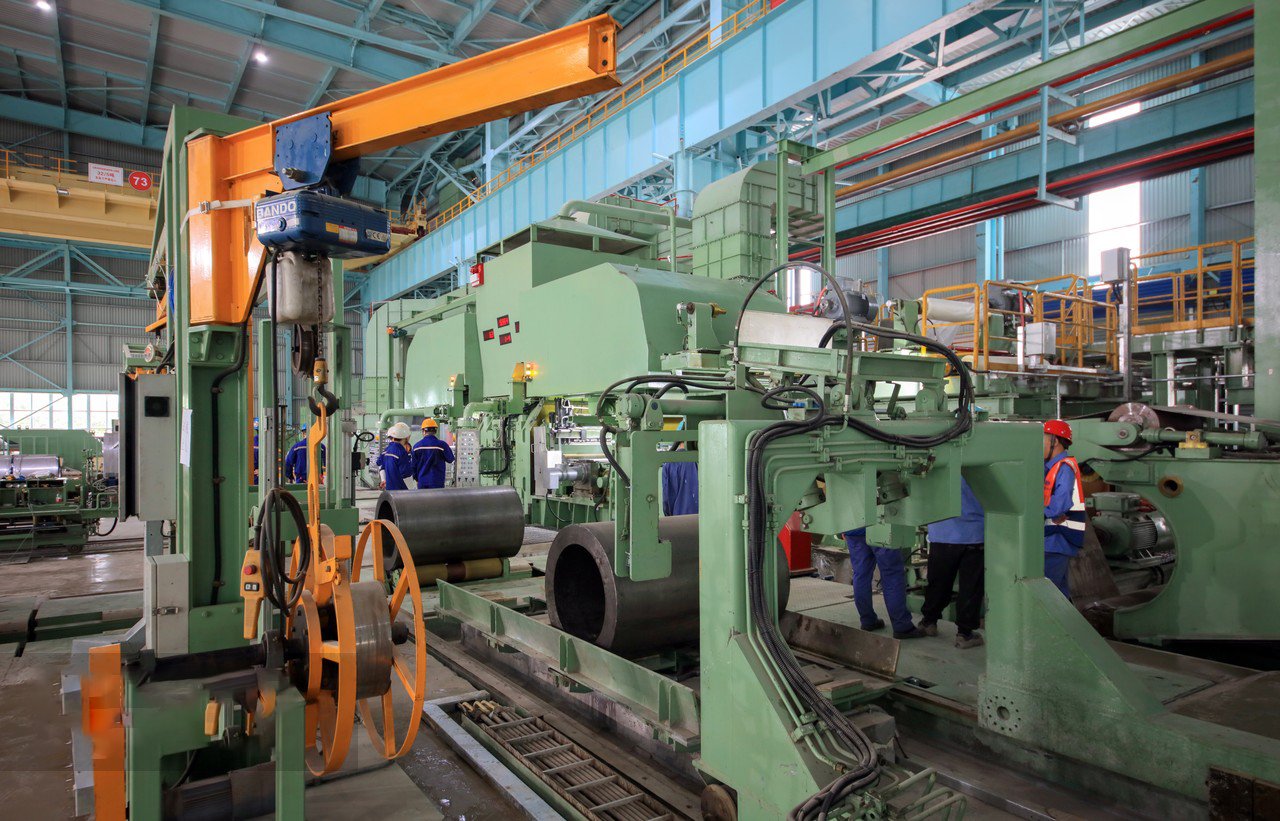
When an engineering contractor or a manufacturing plant manager specifies a material, they are making a choice that will have long-term consequences. The decision to use heat-resistant stainless steel is an investment in predictability and resilience. The core principle behind its effectiveness is alloy design using chromium and nickel5. By introducing specific elements—primarily chromium and nickel—into the iron matrix, we fundamentally alter the material's behavior at high temperatures. These elements don't just coexist with the iron; they actively change its chemical and physical properties. The process is analogous to creating a vaccine for the steel; we introduce elements that enable it to build a powerful defense against future environmental attacks. As a global supplier, MFY has the privilege of seeing these materials perform in a vast range of applications, from petrochemical crackers in the Middle East to precision annealing furnaces in Southeast Asia. This broad perspective reinforces a universal truth: the key to high-temperature reliability lies in the intelligent application of material science, specifically in the synergistic effects of chromium, nickel, and other critical alloying elements.
The Role of Chromium and Nickel in Forming a Protective Oxide Layer
The hero of heat-resistant stainless steel is chromium. When the steel is exposed to an oxidizing environment at high temperatures, the chromium atoms near the surface selectively react with oxygen to form a very thin, stable, and non-porous layer of chromium oxide ($Cr_2O_3$). This layer is incredibly adherent to the base metal and, most importantly, it is passive, meaning it does not readily react further. Unlike the flaky iron oxide that forms on carbon steel, this chromium oxide shield clings tightly, preventing oxygen from reaching the iron underneath. This dramatically slows the rate of oxidation by several orders of magnitude.
What makes this protective layer truly remarkable is its self-healing capability. If the surface is scratched or damaged, exposing the underlying metal, the chromium in the newly exposed area will immediately react with oxygen in the atmosphere to reform the protective oxide layer. This dynamic, self-repairing mechanism is what provides long-term, reliable protection. A typical heat-resistant grade like 310S contains around 25% chromium, an amount optimized to ensure the rapid and consistent formation of this vital protective film across a wide range of temperatures, up to about 1150°C.
While chromium provides the shield, nickel enhances the shield's foundation and provides high-temperature strength. Nickel is an austenite stabilizer, meaning it helps the steel maintain a specific crystal structure (Face-Centered Cubic) at high temperatures. This austenitic structure is inherently stronger and more resistant to creep than the ferritic structure of carbon steel at the same temperature. Furthermore, nickel improves the adhesion of the protective chromium oxide scale and reduces its tendency to spall during thermal cycling. This is why high-nickel alloys are often preferred for applications involving severe temperature fluctuations.
Austenitic vs. Ferritic Grades: Tailoring the Solution to the Application
Not all heat-resistant stainless steels are created equal. They are broadly categorized into several families based on their crystalline structure, with austenitic and ferritic grades being the most common for high-temperature applications. Choosing between them requires a nuanced understanding of the specific demands of the furnace or oven.
Austenitic grades, such as 304, 316, 309, and 310, are characterized by their high chromium (16-26%) and nickel (7-35%) content. This composition gives them an excellent combination of high-temperature strength (creep resistance), good ductility, and outstanding oxidation resistance. They are the workhorses of the high-temperature world, suitable for structural components, furnace linings, and conveyor systems. For example, a distributor working with clients in the heat treatment industry would likely stock Grade 310S for its superior strength and oxidation resistance at temperatures exceeding 1000°C. Their primary drawback is a susceptibility to stress corrosion cracking in certain environments and lower resistance to sulfidation compared to some ferritic grades.
Ferritic grades, such as 430 and 446, contain high chromium (11-30%) but very little or no nickel. This makes them more cost-effective than austenitic grades. They offer excellent resistance to oxidation and sulfidation, making them a great choice for applications where sulfur is present, such as in systems using high-sulfur fuels. Grade 446, with its very high chromium content (~25%), can be used in oxidizing conditions up to 1100°C. However, their high-temperature strength is significantly lower than that of austenitic grades, and they can be susceptible to embrittlement after prolonged exposure to certain temperature ranges (e.g., 475°C embrittlement). They are often used for applications like recuperators, baffles, and burner components where high creep strength is not the primary requirement.
From Theory to Practice: MFY's Integrated Supply Chain Advantage
Understanding the science is one thing; delivering the right material consistently and efficiently is another. This is where MFY's position as an integrated group company becomes a critical advantage for our clients. Our business model, which spans from raw material trading to cold-rolled processing and tube manufacturing, gives us end-to-end control over the quality and availability of our heat-resistant stainless steel products. When a client, for instance an equipment integrator in Russia, needs a specific grade of stainless steel sheet with tight thickness tolerances for a new furnace design, we are not just a trader searching the market. We have direct oversight of the production process.
This integration allows us to ensure that the chemical composition of our alloys meets the precise specifications required for optimal high-temperature performance. Our production facilities can process coils and sheets to the exact dimensions our clients need, minimizing waste and fabrication time on their end. A manufacturing company in India needing a rapid shipment of 321H stainless steel pipe for a furnace repair can leverage our strong inventory and rapid export delivery capabilities to minimize their costly downtime.
Moreover, our role extends beyond just supply. Our team integrates R&D and practical field experience to act as consultants. We work with clients to analyze their specific operating conditions—temperature, atmosphere, thermal cycling, mechanical load—and recommend the most cost-effective material solution for their application. This collaborative approach, backed by a robust and fully integrated supply chain, is how we translate the theoretical benefits of heat-resistant stainless steel into tangible, real-world results for our partners across the globe.
Chromium forms protective oxide layerTrue
Chromium reacts with oxygen to create a stable, self-repairing Cr₂O₃ layer that prevents further oxidation.
Nickel decreases high-temperature strengthFalse
Nickel actually enhances high-temperature strength by stabilizing austenitic structure and improving oxide adhesion.
What solutions are available for enhancing the durability of steel sheets in extreme heat?
Beyond selecting a base alloy, how can you push the performance envelope even further? Durability can be enhanced through advanced alloying, protective surface treatments, and intelligent design. These strategies work together to create a multi-layered defense system against the most extreme thermal and chemical challenges.
To enhance the durability of steel sheets in extreme heat, solutions include selecting advanced alloys with minor elements like silicon and cerium, applying surface treatments such as aluminizing or ceramic coatings, and implementing smart design and fabrication techniques to mitigate thermal stress.
Simply choosing a standard heat-resistant grade is often just the starting point. For the most demanding applications, where temperatures are at the upper limits or the chemical environment is particularly aggressive, we must look at a system of solutions. At MFY, we often advise clients that achieving maximum durability is a three-pronged approach. First, we can fine-tune the alloy's chemistry6 itself. Second, we can add a protective barrier to the surface of the component. And third, we can optimize the mechanical design of the part to better accommodate the stresses of the high-temperature environment. It’s about building layers of resilience. I remember a case with a petrochemical client in the Middle East whose furnace tubes were failing prematurely due to a combination of high-temperature oxidation and carburization. The solution wasn't just a better alloy; it involved an alloy with specific micro-alloying additions, combined with a diffused surface coating, to provide a level of performance that neither solution could achieve on its own. This holistic view is essential for pushing the boundaries of material performance and ensuring reliability in critical applications.
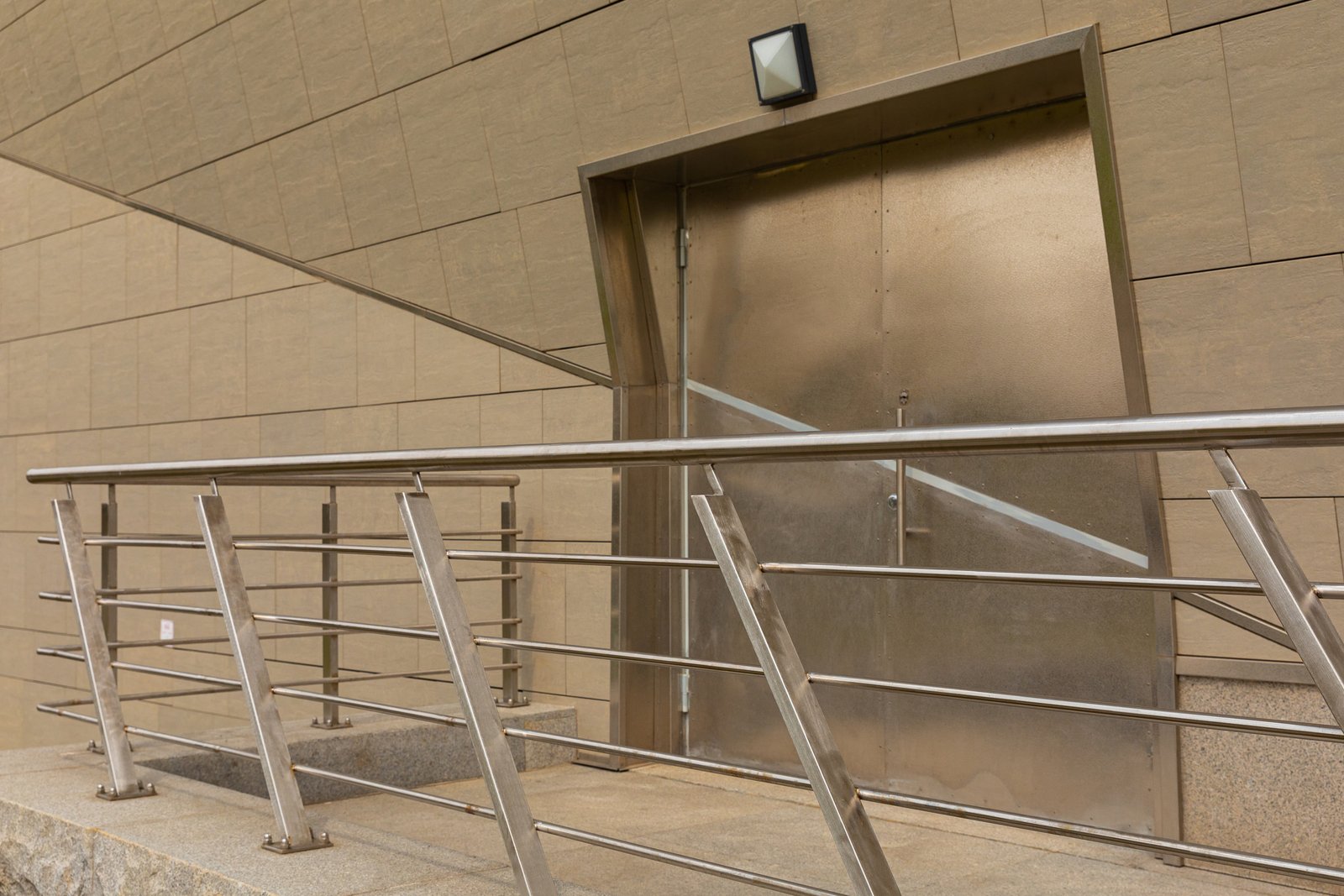
The quest for enhanced durability in high-temperature environments is a continuous process of innovation in both metallurgy and engineering. It's a field where incremental improvements can lead to significant gains in service life, efficiency, and safety. For our clients, whether they are distributors supplying a wide range of industries or construction contractors building large-scale industrial plants, having access to these advanced solutions provides a significant competitive advantage. It allows them to offer their own customers systems that last longer, run more efficiently, and are safer to operate. This deep dive into advanced solutions moves beyond the foundational choice of alloy and into the realm of specialized enhancements. These are the techniques that allow us to operate furnaces at higher temperatures, handle more aggressive process chemistries, and achieve service intervals that were previously unattainable. As a company deeply rooted in both the production and innovation aspects of stainless steel, MFY is committed to exploring and providing these next-generation solutions. From the subtle art of micro-alloying to the robust protection of advanced coatings, these strategies represent the cutting edge of high-temperature material science.
Advanced Alloying: The Impact of Silicon, Aluminum, and Cerium
While chromium and nickel form the backbone of heat-resistant alloys, the addition of small amounts of other elements can have a profound impact on their performance. This practice, known as micro-alloying, is a key strategy for tailoring an alloy to a specific hostile environment. Silicon is a prime example. Adding 1-2% silicon to a high-chromium stainless steel significantly improves its resistance to oxidation, particularly in carburizing or "metal dusting" environments. Silicon promotes the formation of a thin, continuous, and highly protective silica ($SiO_2$) sub-layer beneath the primary chromium-oxide scale. This silica film acts as a highly effective barrier against carbon ingress, dramatically extending the life of components in carbon-rich atmospheres.
Aluminum is another powerful alloying addition. When added to ferritic or austenitic stainless steels, it contributes to the formation of an aluminum-oxide ($Al_2O_3$) scale. This alumina scale is even more stable and protective at very high temperatures than chromium oxide, allowing for service in more extreme oxidizing conditions. Alloys with significant aluminum content can push the operating temperature ceiling higher and provide superior resistance in sulfur-bearing environments. These aluminized stainless steels are often a cost-effective alternative to more expensive nickel-based superalloys in certain applications.
Rare earth elements, such as cerium (Ce) and yttrium (Y), are also used in trace amounts (typically <0.1%) to great effect. These elements don't necessarily change the type of oxide scale that forms, but they dramatically improve its adherence to the base metal. They act as "vacancy sinks" at the metal-scale interface, preventing the formation of voids that can lead to scale spalling during thermal cycling. This enhanced scale adhesion is critical for applications with frequent temperature fluctuations, ensuring the protective layer remains intact and effective throughout the component's service life. According to research from leading metallurgical institutes, the addition of rare earth metals can increase the life of heating elements by up to three times in severe thermal cycling conditions.
Surface Treatments and Coatings for Extreme Environments
For applications where even the most advanced alloy is pushed to its limit, the next line of defense is an engineered surface. Surface treatments and coatings can provide a barrier that is even more resistant to the specific environment than the substrate material itself. Pack cementation is a common method for creating such a barrier. In this process, a component is packed in a powder mixture containing aluminum (for aluminizing), chromium (for chromizing), or silicon (for siliconizing) and heated in a retort. Atoms from the powder diffuse into the surface of the part, creating a new, integral surface alloy with exceptionally high concentrations of the protective element. A diffused aluminide coating, for example, can give a component the high-temperature oxidation resistance of a much more expensive material.
Thermal spray coatings, such as High-Velocity Oxygen Fuel (HVOF) or plasma spraying, offer another versatile solution. These processes can deposit a dense, well-bonded layer of a specialized material—including ceramics, metals, or cermets (ceramic-metal composites)—onto the surface of a steel sheet component. For instance, a furnace roller could be coated with a ceramic like yttria-stabilized zirconia (YSZ) to provide a thermal barrier, reducing the operating temperature of the underlying steel and improving its creep life. Alternatively, a cermet coating could be applied to provide exceptional resistance to both high-temperature wear and corrosion.
ly, ceramic fiber-based coatings and liners offer another route to enhanced durability. These can be applied as a paint or a paste and cured to form a highly insulating, corrosion-resistant layer. In addition to protecting the metal from chemical attack, they significantly reduce the amount of heat absorbed by the component, lowering its overall temperature and mitigating the effects of thermal shock. For an engineering contractor retrofitting an old furnace, applying such a coating to the existing liner can be a cost-effective way to boost efficiency and extend the furnace's life without a complete rebuild.
Innovative Design and Fabrication Techniques to Mitigate Stress
The most advanced material in the world can still fail if the component is poorly designed. Intelligent design and fabrication are critical for managing the immense stresses generated in high-temperature environments. A key principle is to accommodate, rather than resist, thermal expansion. The use of expansion joints, bellows, or sliding supports allows components to grow and shrink freely during thermal cycling, preventing the buildup of destructive internal stresses that lead to warping and fatigue cracking. For large structures like furnace walls or roofs, fabricating them from smaller, overlapping panels rather than a single large sheet allows for more manageable expansion and easier replacement of localized damage.
Welding is often the weakest point in a high-temperature fabrication. Using the wrong filler material or an improper welding procedure can create a weld joint that has lower creep strength or corrosion resistance than the base metal, leading to preferential failure at the weld. It is crucial to use a matching or over-alloyed filler metal and to follow strict welding procedures that control heat input and cooling rates to preserve the metallurgical properties of the heat-resistant alloy. Post-weld heat treatment may also be required to relieve residual stresses and optimize the microstructure for high-temperature service.
Furthermore, design should aim to minimize stress concentrations. This means using generous radii at corners, avoiding sharp notches, and smoothly blending changes in cross-section. These geometric stress raisers can act as initiation points for creep and fatigue cracks. We once worked with an equipment integrator who was seeing repeated failures of a support bracket. A simple Finite Element Analysis (FEA) revealed a sharp corner was creating a stress concentration three times higher than the nominal stress. By simply redesigning the bracket with a larger radius, we were able to solve the chronic failure problem without changing the material, demonstrating that thoughtful design is as crucial as material selection.
Silicon improves oxidation resistanceTrue
Adding 1-2% silicon creates a protective silica sub-layer that prevents carbon ingress in high-temperature environments.
Cerium changes oxide scale typeFalse
Rare earth elements like cerium improve scale adherence but don't alter the fundamental type of oxide that forms.
What are the best practices for selecting and maintaining heat-resistant stainless steel in industrial applications?
How do you ensure you're making the right choice and protecting your investment for the long haul? Proper selection requires a rigorous analysis of your operating conditions. Effective maintenance involves proactive inspection and care, which are key to maximizing the service life of your components.
Best practices include a thorough analysis of the operating temperature, atmosphere, and mechanical loads to select the optimal alloy. This is followed by a proactive maintenance program featuring regular visual inspections, scheduled cleaning, and diligent monitoring for early signs of degradation like warping or cracking.
The final, crucial step in this journey is translating knowledge into action. Selecting the right alloy and implementing a sound maintenance strategy are the twin pillars of long-term success. From my vantage point at MFY, I’ve seen that the most successful companies are those who treat material selection as a critical engineering discipline7, not just a procurement task. They partner with their suppliers, share detailed operational data, and think in terms of lifecycle cost, not just initial price. I recall a client, a large chemical processing contractor, who developed a detailed "Material Specification Protocol" in collaboration with our technical team. For every new project, they walk through a comprehensive checklist, ensuring no variable is overlooked. This disciplined approach has virtually eliminated material-related failures in their new plant constructions. It's this level of diligence that separates the leaders from the rest and turns an industrial furnace from a potential liability into a reliable, high-performance asset. This same discipline must then be applied to maintenance to reap the full benefit of the initial investment.
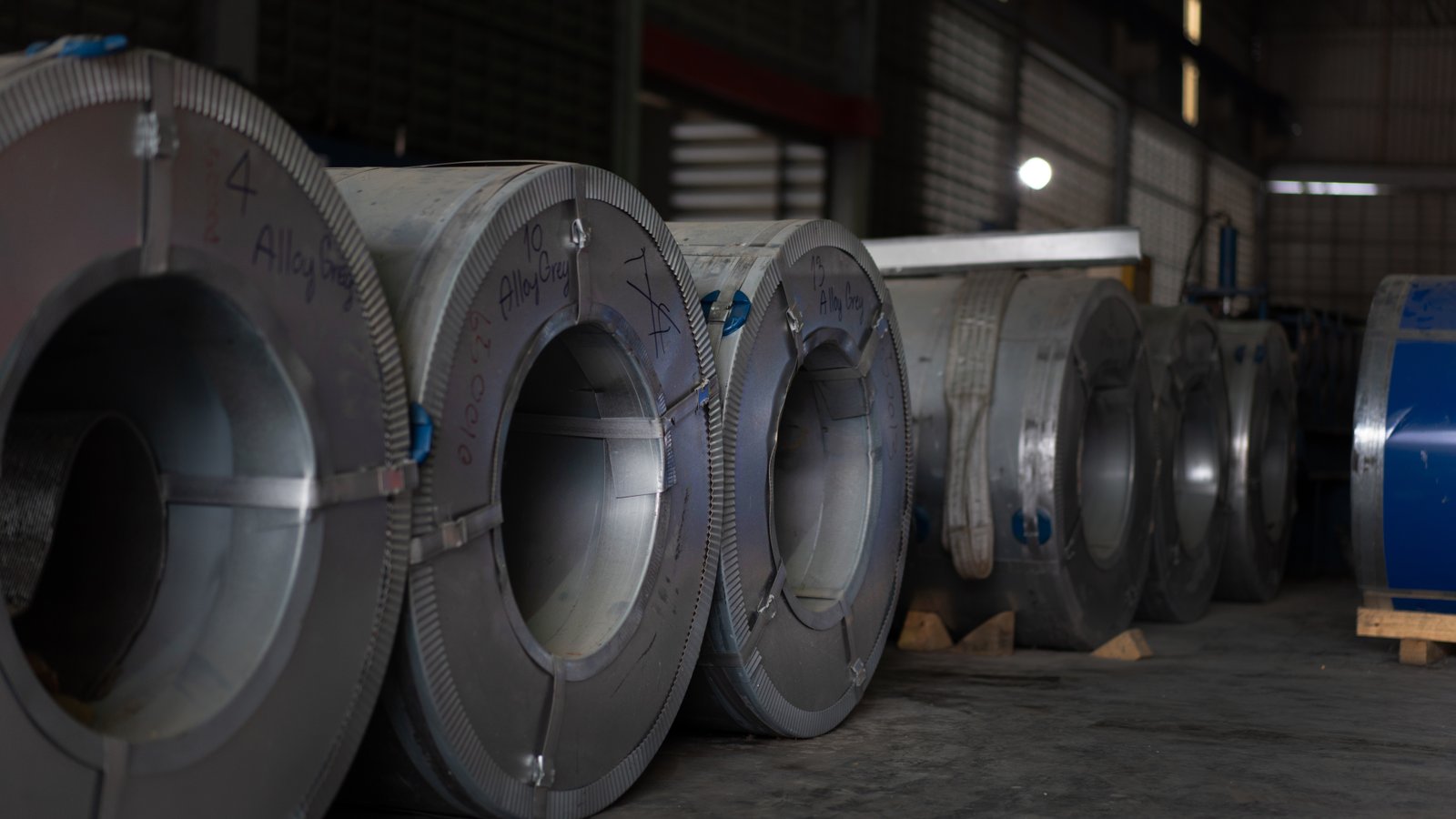
Achieving long-term reliability for your high-temperature equipment is not a "set it and forget it" proposition. It's a continuous cycle of informed selection, careful installation, and diligent maintenance. The best-in-class operators I've worked with around the world, from manufacturing hubs in Southeast Asia to resource processing plants in Russia, all share a common trait: they are systematic in their approach. They understand that the initial choice of material lays the foundation, but ongoing stewardship is what ensures a structure stands the test of time. This final section is dedicated to providing a practical framework for that process. We will move from the "what" and "why" to the "how." How do you systematically select the right material from the many available grades? And how do you implement a maintenance plan that is both effective and efficient? By adopting these best practices, you can ensure that your investment in high-quality, heat-resistant stainless steel delivers the maximum possible return in terms of service life, safety, and operational efficiency.
A Comprehensive Checklist for Material Selection
Making the optimal material choice requires a systematic evaluation of the service environment. Rushing this process or relying on incomplete data is the most common cause of premature failure. Before contacting a supplier like MFY, gather the following information to facilitate a productive technical discussion:
-
Maximum Operating Temperature and Cycling: What is the highest temperature the component will see? Is the temperature constant, or does it cycle frequently? The maximum temperature will determine the candidate alloys, while the cycling frequency will influence the choice between grades with better thermal fatigue resistance. For example, constant high temperatures might favor a ferritic grade, while severe cycling favors a nickel-rich austenitic grade.
-
Furnace Atmosphere Composition: What gases are present in the furnace? Is it an oxidizing atmosphere (excess air), a reducing one, or a special atmosphere rich in carbon (carburizing), nitrogen (nitriding), or sulfur (sulfidizing)? The chemical composition of the atmosphere is just as important as the temperature. A grade that excels in oxidation may fail quickly in a high-sulfur environment. Provide as much detail as possible, including gas concentrations if known.
-
Mechanical Load and Stresses: What load will the component have to bear at temperature? The stress level is a critical input for creep calculations. Remember that the strength of steel decreases significantly at high temperatures. Provide details on both static (constant) and dynamic (vibrational or impact) loads. This information is vital for determining the required thickness and selecting a grade with adequate creep strength.
We recently assisted a construction contractor in choosing a material for furnace support hangers. Their initial choice was Grade 304, based on temperature alone. However, after reviewing their operational data, we noted the presence of sulfur compounds from the fuel source and significant thermal cycling. We recommended a shift to Grade 309S, which offers better sulfidation resistance and improved performance in thermal cycling compared to 304, preventing what would have been a certain premature failure.
Proactive Maintenance Strategies to Maximize Service Life
Once the correct material is installed, a proactive maintenance plan is essential to maximize its service life and prevent unexpected failures. This plan should be integrated into your plant's overall maintenance schedule.
-
Scheduled Visual Inspections: The most powerful maintenance tool is a trained eye. At regular intervals (e.g., during scheduled plant shutdowns), visually inspect the components. Look for signs of trouble: heavy scaling or flaking, significant warping or distortion, localized hot spots (indicated by differences in color), and any evidence of cracking, particularly around welds and corners. Keeping a photographic log of the component's condition over time can help identify slow, progressive degradation.
-
Regular Cleaning: Depending on the process, deposits can build up on furnace components. Some deposits can be harmless, but others can accelerate corrosion by creating a localized, aggressive chemical environment beneath the deposit. For example, ash from certain fuels can contain low-melting-point compounds that are highly corrosive. A regular, scheduled cleaning program, using appropriate methods that do not damage the protective oxide scale (e.g., avoiding aggressive grinding or sandblasting), can significantly extend a component's life.
-
Non-Destructive Testing (NDT): For critical components, consider periodic NDT to look for damage that isn't visible on the surface. Techniques like dye penetrant testing can be used to find surface-breaking cracks, while ultrasonic testing can be used to measure the remaining wall thickness of a component to track material loss from corrosion or oxidation. This data-driven approach allows for predictive maintenance, enabling you to plan for a replacement well before a failure occurs.
Partnering for Success: How MFY Guides Clients Through the Process
Selecting and maintaining heat-resistant steel is a complex task, and you don't have to do it alone. The best practice of all is to form a strong partnership with a knowledgeable and capable supplier. At MFY, we view our role as far more than just taking orders and shipping metal. Our vision is to be a leading international trade and service brand, which means providing end-to-end support that helps our clients succeed. Our fully integrated supply chain, from raw materials to finished products, gives us unparalleled control over quality and product consistency.
When a new client, whether it's a distributor or an end-user, comes to us with a high-temperature challenge, our process begins with listening. Our technical sales team, supported by our engineers, works to understand the complete picture using the checklist described above. We can then leverage our deep product knowledge to recommend the optimal material—not necessarily the most expensive one, but the one that offers the best lifecycle value for their specific application. We can provide material test reports (MTRs) and any necessary certifications to ensure full traceability and quality assurance.
Our support doesn't end with the sale. We leverage our strong production capacity and inventory to ensure rapid delivery, which is critical when a client is facing an unexpected shutdown. We can provide guidance on best practices for fabrication, welding, and installation to ensure the material performs as expected. By combining high-quality products with expert guidance and a reliable supply chain, we empower our clients to build, operate, and maintain industrial furnaces and ovens that are safer, more efficient, and more durable.
Material selection requires operating condition analysisTrue
The article emphasizes that proper alloy selection must consider temperature, atmosphere, and mechanical loads.
304 stainless is best for all high-temperature applicationsFalse
The case study shows Grade 304 would have failed in sulfur-rich conditions, proving no single alloy suits all applications.
Conclusion
Choosing the right heat-resistant stainless steel is a strategic investment in operational reliability, safety, and efficiency. By analyzing your needs, selecting the correct alloy, and practicing proactive maintenance, you transform a challenge into a competitive advantage. MFY is your partner in this process, delivering excellence worldwide.
-
Discover how heat-resistant alloys outperform standard steel in high-temperature environments for efficiency and safety ↩
-
Discover the impact of thermal energy on the chemical structure of steel ↩
-
Understand why Grade 310S stainless steel is suitable for high-temperature environments ↩
-
Discover specific applications and benefits of 310S and 321H stainless steel sheets ↩
-
Learn how alloy design with chromium and nickel improves heat resistance in stainless steels ↩
-
Understand the impact of minor elements on alloy performance in high-temperature applications ↩
-
Learn why material selection is vital to engineering success beyond procurement. ↩
Have Questions or Need More Information?
Get in touch with us for personalized assistance and expert advice.
